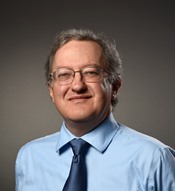Artifacts and Image Quality Issues in MRI Advanced/Rapid Techniques
Presentations
MO-FG-207-0 (Monday, 7/11/2022) 1:45 PM - 3:45 PM [Eastern Time (GMT-4)]
Room 207
Until thirty-five years ago, clinical magnetic resonance Imaging (MRI) was primarily based on the spin-warp technique, where the raw data was sampled at points on a two- or three-dimensional cartesian k-space. Unfortunately, image acquisition times for a conventional spin-warp method can be long, affecting not only patient throughput but also limiting the available contrasts in an exam due to timing constraints (e.g., ultra-short TE sequences). Since its introduction, MRI has experienced extensive technological growth and product introduction, especially in the areas of rapid image acquisition and reconstruction. Routine clinical practice has embraced many of these techniques, including data undersampling methods (e.g., parallel imaging) and non-cartesian sampling of raw data.
All these new techniques can produce high-quality images under ideal conditions, but the increase in complexity places new constraints on scanner and technologist performance. Discussion of how these advanced image acquisition methods perform under sub-optimal clinical conditions has been lagging and sparse. This lack of discourse creates a problem for the medical physics community: how do we advise our physician partners about using these techniques properly to generate the high-quality images they require?
This symposium presents the topic of how advanced and rapid techniques have changed the appearance of image artifacts and introduced image quality issues beyond the context of spin-warp imaging.
Learning Objectives (after the talk, the attendee should be able to):
1) Distinguish differences between how advanced and conventional MRI techniques work.
2) Recognize how advanced techniques can modify conventional MRI artifact appearances.
3) Interpret how advanced techniques lead to particular artifacts not found in conventional imaging.
4) Suggest appropriate usage conditions for advanced techniques to preserve image quality.
Funding Support, Disclosures, and Conflict of Interest: N. Yanasak and T. Andrews: no conflicts of interest to disclose. M. Doneva: employee of Philips Healthcare. Y. Shu: owns intellectual properties licensed by GE Healthcare.
Handouts
- 175-63282-16291659-183063-1692839160.pdf (Trevor Andrews)
- 175-63284-16291659-184083-960941549.pdf (Nathan Yanasak)
- 175-63285-16291659-186775-910332998.pdf (Mariya Doneva)
Keywords
Not Applicable / None Entered.
Taxonomy
Not Applicable / None Entered.
Contact Email






